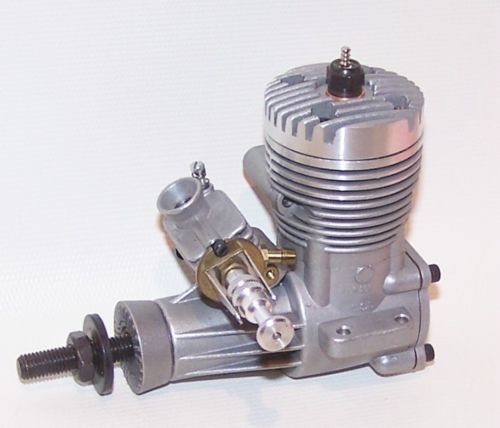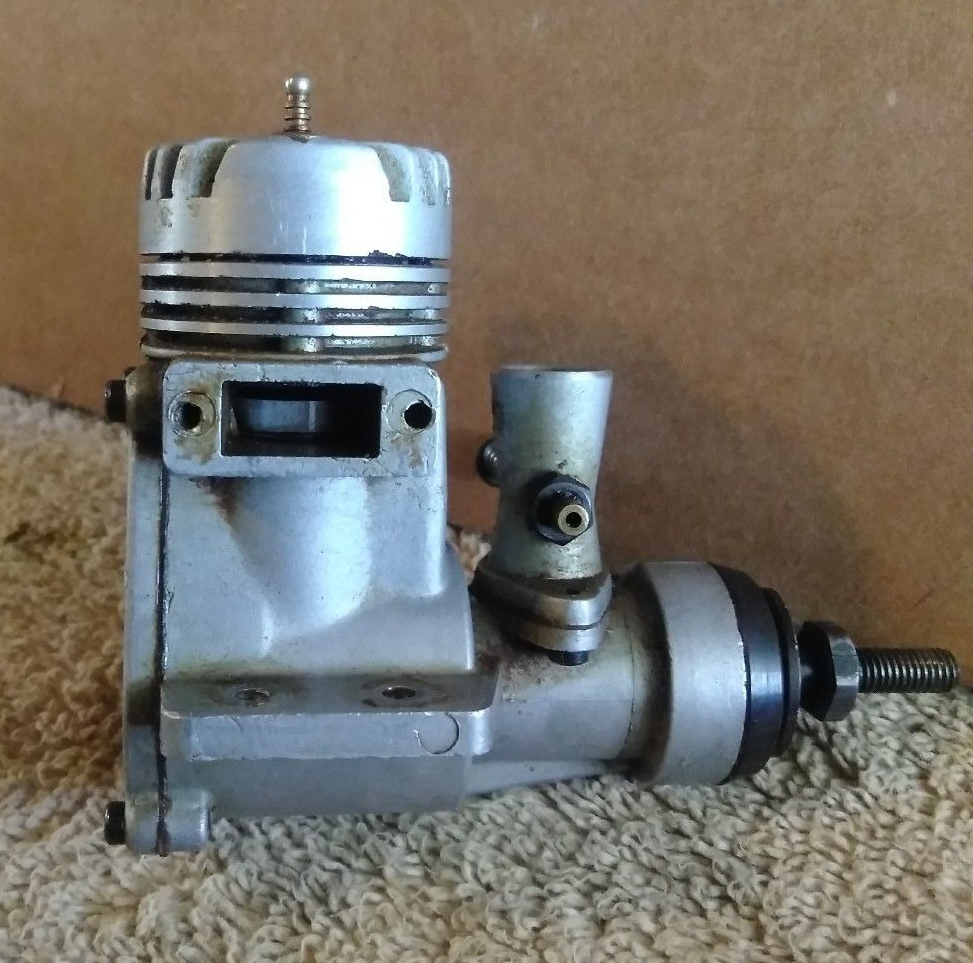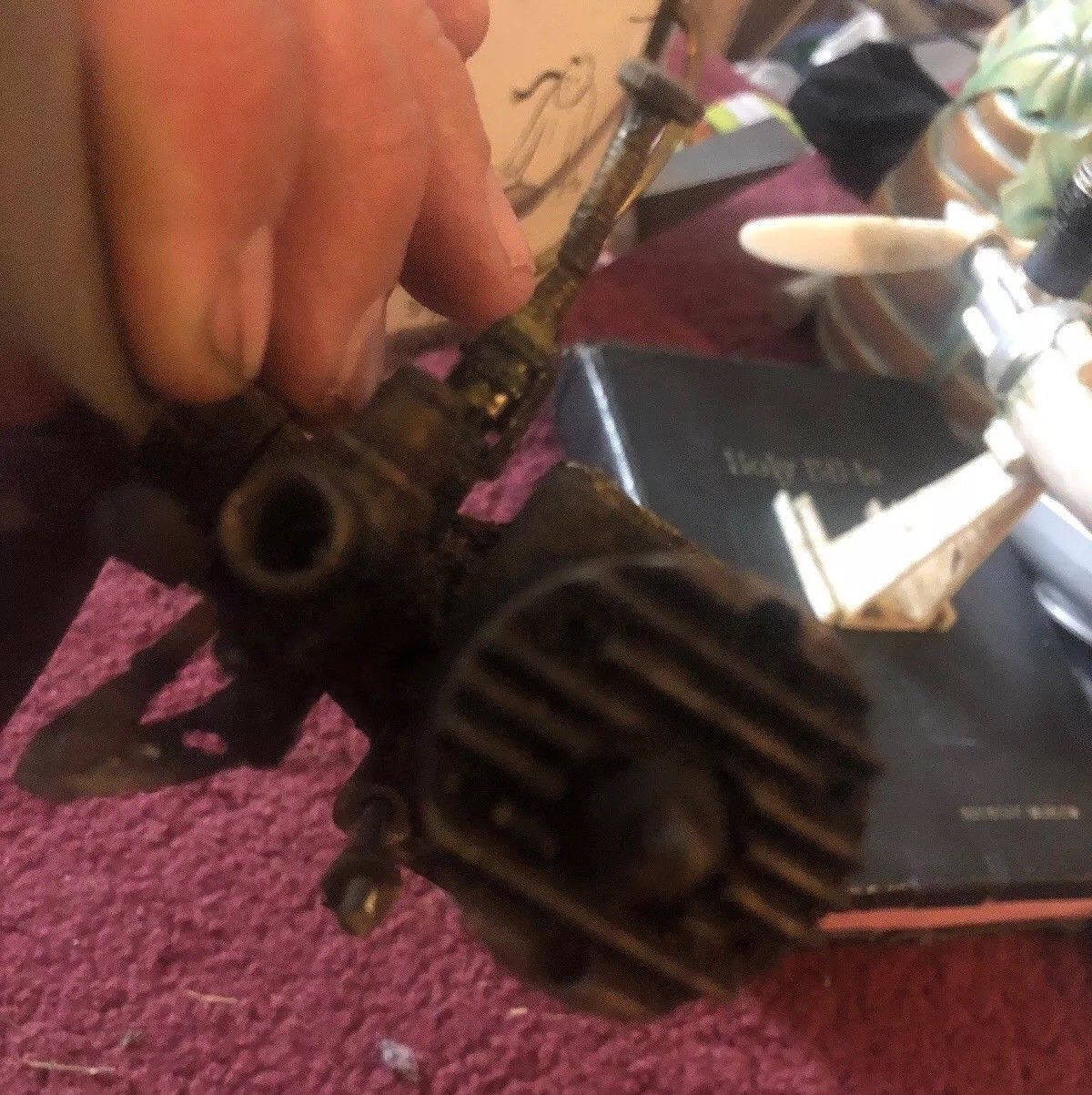I’ve bought a number of engines via eBay most of which were satisfactory but I’ve got a few duds as well. Ebay is basically buyer beware market though some sellers will accept returns.
Here are some things I think you should look for with an engine you are considering buying: It should be relatively clean and damage free i.e. no broken lugs or chipped fins. Make sure the engine has a prop nut, prop washer, prop driver, venturi, spray bar and needle valve; these are items that are relatively easy to loose and could be difficult to replace.
Here’s a picture of a C/L engine showing the items I’ve identified above.

Other things to look for: Bolts with damaged heads indicates they’ve may have been over tightened as a result of the engine having been disassembled or tightened using an incorrect tool.
Sometimes modellers will modify the mounting holes to suit the plane they are installing the engine into. This is not necessarily bad but could weaken the lugs.
I have also noticed that well trusted suppliers know how to photograph their products. If the pictures are in focus, against a light plain background that differs in colour from the engine and if there are plenty of them that should be a good indications.
Here some examples. Please note this is my opinion, I’m not an expert photographer.
Good. The subject is well lit and taken there are no shadows, its clear and in focus.

Average: Not a uniform background but in this case it doesn’t detract from the photo.

Poor: The subject is out of focus, its dark and the photographer’s hand obscures part of the photo and there’s clutter in the background.

The one thing you can’t see via eBay is the engine’s compression. Low compression will make the engine difficult if not impossible to start and if it runs it will lack power. An engine may be described as having good compression but without measuring it this is a bit subjective and you won’t really know until you get engine.
The other thing that is not easily detectable via photographs is if the needle valve is bent. This can happen in a crash.
Another thing to note is that many older engines do not come with mufflers (silencers) which may be required where you intend to fly. After market mufflers are available from various sellers on eBay and other suppliers such as Mecoa (mecoa.com).
Older glow engines (before 1980s) often need a fuel that contains about 25% castor oil. Most fuel available at hobby shops these days only has 20% synthetic oil. On the subject of synthetic oils vs castor oil you’ll find that 2 aeromodellers have at least 3 opinions between them, both types of oil have their merits and drawbacks.
If you’re buying an older engine you might be able to find a test report on Sceptre Flight which may describe the oil content of the fuel used for the test and this was presumably as specified by the engine manufacturer.
If the engine comes with a Glow Plug consider that a bonus (Glow Plugs aren’t free) but don’t dismiss and engine if it doesn’t have one.
Don’t forget to factor in postage. Many U.S. sellers seem to charge exorbitant postage, possibly a substantial portion of the cost of the item itself. I recently bought an engine where the postage was more than half the total cost. Be wary if the seller uses the Global Shipping Program. I recently had an engine confiscated via that program
The first thing to do when you get the engine is to put a few drops of light oil such as 3-1 into the engine via the venturi and exhaust (or remove the glow plug and put a few drops in that way.) If the engine is new and hasn’t been run this is unlikely to be necessary. This is to protect it after a run as a previous owner may not have and if engine is stiff and gummed up having not being run for a while. Do this after a flying session too.
